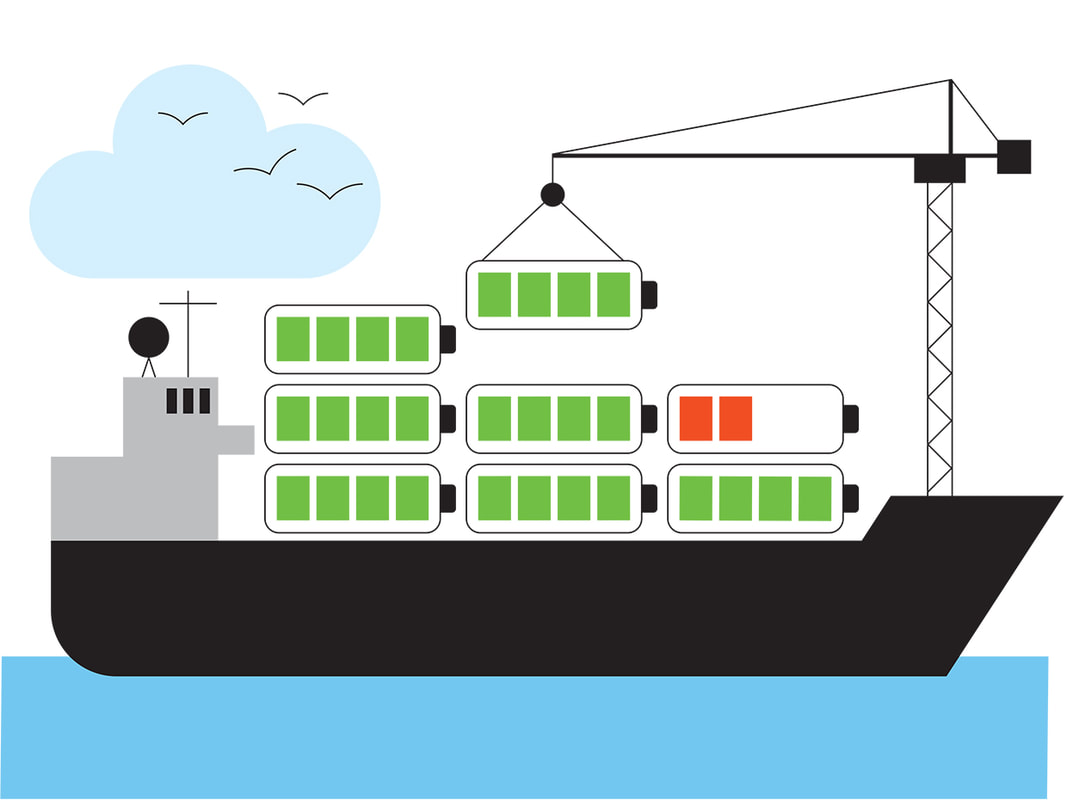|
IMO (international maritime organization) has adopted mandatory measures to reduce emissions of greenhouse gases from international shipping, under IMO's pollution prevention treaty (MARPOL) - the Energy Efficiency Design Index (EEDI) mandatory for new ships, and the Ship Energy Efficiency Management Plan (SEEMP). MEPC 74 (May 2019) adopted on Invitation to Member States to encourage voluntary cooperation between the port and shipping sectors to contribute to reducing GHG emissions from ships. This could include regulatory, technical, operational and economic actions, such as the provision of: Onshore Power Supply (preferably from renewable sources); safe and efficient bunkering of alternative low-carbon and zero-carbon fuels; incentives promoting sustainable low-carbon and zero-carbon shipping; and support for the optimization of port calls including facilitation of just-in-time arrival of ships. The Global Industry Alliance to support low carbon shipping (GIA), operating under the auspices of IMO’s GloMEEP project, has recognized the key role of ports in the decarbonization of shipping. In particular, just-in-time (JIT) operation of ships has a potential to reduce emissions. The GIA has been gathering experience from ports that have successfully (or unsuccessfully) implemented JIT; has been analysing barriers; and has been studying concrete measures for removal of these barriers to large-scale uptake of JIT. Is zero-carbon shipping going to become a reality? In the initial IMO strategy, there is a clear ambition to pursue efforts towards phasing out GHG emissions from international shipping entirely, by the end of this century. This has to become a reality. As United Nations Secretary-General Antonio Guterres has said, “We need to put the brake on deadly greenhouse gas emissions and drive climate action…. The world is counting on all of us to rise to the challenge before it’s too late”. Research and development will be crucial, as the targets agreed in the IMO initial strategy will not be met using fossil fuels. There is a need to make zero-carbon ships more attractive and to direct investments towards innovative sustainable technologies and alternative fuels. What is a maritime BESS containerized solution?
Containerized energy storage solution is a complete, self-contained battery solution for a large-scale marine energy storage. The batteries and all control, interface, and auxiliary equipment are delivered in a single standard shipping container for simple installation on board any vessel. The standard maritime BESS container delivery includes
How does maritime BESS container work? The maritime BESS stores energy when demand is low, and delivers it back when demand increases, enhancing the performance of the vessel’s power plant. The flow of energy is controlled by dynamic Energy Storage Control System. It enables several new modes of power plant operation which improve responsiveness, reliability, safety, and fuel consumption. What are the benefits of maritime BESS container?
what are the building standards for maritime BESS containers? DNV 2.7-1/-2/-3 Offshore containers DNVGL-CP-0553 Following items may be described in the certificate (if applicable): — container (description) — EES specifics (type and size of batteries, module data, information about chemistry, cells parameters, cooling method) — BMS (components data with software versions) — EES converter (rated parameters (input/output) and cooling method) — transformer (rated power and cooling method) — fire safety system(s) (fire rating/insulation) Comments are closed.
|
Archives
July 2024
Categories
All
|
- Home
-
Containerised solutions
- Intelligent pressurised container | MUD logging cabin
- Battery energy storage system (BESS) container
- Flexible grid tied battery storage system
- Laboratory container | workshop container | Equipment containers
- Temporary refuge shelter | Toxic gas refuge | Safe haven
- Offshore accommodation cabin | office container
- Reefer container | Refrigerated container
- Intelligent waste water treatment container
- Fresh water generator container
- Cargo Containers
- Product photos & videos
- News & Blogs
- Contact us
|
Featured products
Intelligent pressurised container Temporary refuge (TR) shelter, toxic gas refuge (TGR) Battery energy storage system (BESS) container Containerised waste water treatment plant Fresh water generator container Reefer container Laboratory container, Workshop container Accommodation container Offshore closed container |
All Rights Reserved 2020 © TLS Offshore Containers / TLS Energy
|


